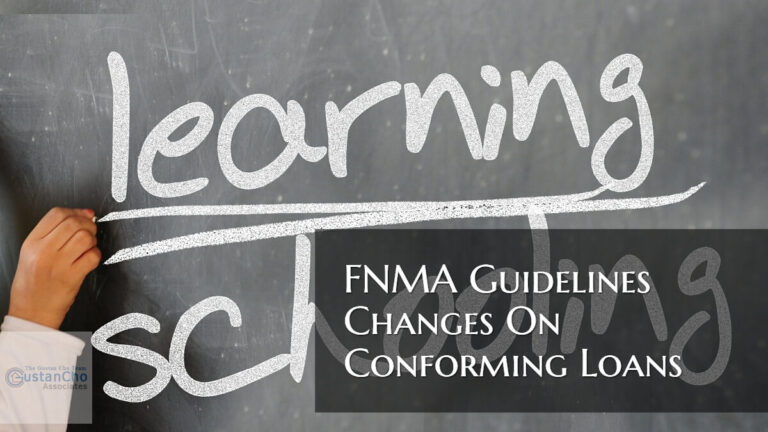Freddie Mac Versus Fannie Mae AUS On Conventional Loans
This Article Is About Using Freddie Mac Versus Fannie Mae AUS On Conventional Loans
What Are Freddie Mac Versus Fannie Mae AUS On Conventional Loans? Both Fannie Mae and Freddie Mac determine the eligibility on whether or not a borrower is eligible for a conventional loan. However, Fannie Mae and Freddie Mac have two different types of AUS. Fannie Mae’s automated underwriting system is commonly known as Desktop Underwriter or DU. Freddie Mac’s automated underwriting system is referred to as Loan Prospector or LP.
It is possible for a borrower to get a refer/eligible per AUS with Fannie Mae’s DU and get an approve/eligible per AUS with Freddie Mac’s LP. However, the lender who runs the automated underwriting system for both Fannie and Freddie needs to be approved lenders with both Fannie Mae and Freddie Mac. Not all lenders are approved with both Fannie and Freddie. Most lenders are just approved with Fannie Mae and NOT Freddie Mac. The good news is Gustan Cho Associates is approved with both Fannie Mae and Freddie Mac. In this article, we will discuss Fannie Mae and Freddie Mac AUS Findings on conventional loans.
Why Borrowers Need To Go With Conventional Loans Versus FHA Loans
There are times when borrowers need to go with conventional versus FHA loans. One of the biggest hurdles borrowers face is having a large outstanding student loan balance. Conventional loans are the only home mortgage program that accepts income-based repayment (IBR PAYMENTS). Other loan programs do not accept IBR payments. HUD, the parent of FHA, will only accept fully amortized monthly payments over an extended term.
If the borrower cannot get a fully amortized monthly payment over an extended term from the student loan provider, the lender will take 1.0% of the student loan balance and use that number as a hypothetical debt when calculating the borrower’s debt to income ratio. 1.0% of the outstanding student loan balance can automatically disqualify any homebuyer from qualifying for a mortgage. This holds especially true for borrowers with high student loans that exceed six figures.
High Student Loan Debts
According to data from the Federal Reserve Board, student loan debt in the United States has peaked at $2.0 trillion dollars. The cost of a college education can be $35,000 at 4-year public colleges and universities and exceed over $60,000 or more at private 4-year universities. It is next to impossible to get an undergraduate college education these days without student loans. Having a student loan balance exceeding six figures is very common these days.
To get higher-paying jobs, most college graduates with undergraduate degrees need to further their education and need a graduate and/or a professional degree. Graduate and/or professional degrees can exceed over $50,000 per year. A recent client at Gustan Cho Associates recently graduated from law school and landed a government job as an attorney. The new job pays $75,000 per year. However, her student loan balance of both undergraduate and graduate degrees total over $500,000.
FHA Loans Versus Freddie Mac Versus Fannie Mae AUS On Conventional Loans
Taking a hypothetical 1.0% of the outstanding balance is $5,000 per month. Her monthly hypothetical 1.0% of the outstanding balance is almost as much as her monthly take-home salary. This would make it impossible for this borrower to qualify for an FHA loan. Her monthly income-based payment (IBR PAYMENT) is at zero dollars per month. Fannie Mae and Freddie Mac Agency Guidelines will enable this borrower to qualify for a conventional loan. Again, conventional loans are the only loan program that allows income-based repayment on outstanding student loans.
HUD, the parent of FHA, will want either a fully amortized hypothetical monthly payment over an extended-term in writing from the student loan provider and/or take 1.0% of the hypothetical monthly payment. This makes it impossible for first-time homebuyers who are at the low-income stage of their career to qualify for a home with an FHA loan but they can qualify with a conventional loan.
Income-Based Repayment Student Loans
Income-based repayment is the most common payment method for homebuyers with high student loan balances. The monthly payment due is based on the borrower’s monthly income. The more income they make, the larger the monthly student loan payment they pay. Deferred student loans are no longer exempt on most loan programs with the exception of VA loans. VA loans with exempt deferred student loans that have been deferred for longer than 12 months. Income-based student loans are often the best payment method for those with high outstanding student loans. This is because it is based on a reduced lower affordable monthly payment depends on the income level. As the income level goes up, the monthly IBR payment will also increase. Many with high student loans will have a zero dollars per month IBR Payment. Fannie Mae and Freddie Mac allow for income-based repayment on conventional loans. However, Freddie Mac is more lenient versus Fannie Mae when it comes to getting an approve/eligible per automated underwriting system.
Freddie Mac Versus Fannie Mae AUS With Large Outstanding Student Loan Balance
It is possible for Fannie Mae to deny an AUS approval for a borrower with higher debt to income ratio and high student loan balance. However, Freddie Mac can render an approve/eligible per AUS for the same borrower Fannie Mae denied.
Freddie Mac stands for the Federal Home Loan Mortgage Corporation. Experienced loan officers who are dumbfounded why they cannot get an approve/eligible per automated underwriting system will automatically try running the same borrower through Freddie Mac’s LP. Oftentimes, a borrower who cannot get an approve/eligible per Fannie Mae’s DU AUS can get an approve/eligible per Freddie Mac’s LP AUS. Both Fannie Mae and Freddie Mac are government-sponsored entities (GSE) whose role is to provide liquidity in the mortgage markets.
The role of Fannie Mae and Freddie Mac is to purchase mortgages on the secondary market from lenders. Lenders use their warehouse line of credit to fund loans to borrowers. They in turn will sell the loans they fund on the secondary market in order to pay their warehouse line of credit. It is due to them being able to sell the loans they fund on the secondary market that lenders can repeat the process of originating and funding more loans at low rates and lower down payment requirements. Fannie Mae and Freddie Mac are the two mortgage giants and the largest buyers of mortgages in the United States. This is how they provide liquidity in the mortgage markets. It is because of Fannie Mae and Freddie Mac that mortgage companies are able to provide home loans at low rates and lower down payments to homebuyers. Gustan Cho Associates are both Fannie Mae and Freddie Mac-approved lenders.
Agency Mortgage Guidelines Versus Lender Overlays
All lenders need to meet the minimum agency mortgage guidelines of Fannie Mae and/or Freddie Mac on conventional loans. However, lenders are allowed to have higher lending requirements that are above and beyond the minimum agency Fannie Mae and/or Freddie Mac Agency Guidelines on conventional loans. There are many lenders that will not honor IBR Payments on conventional loans. However, Gustan Cho Associates has no lender overlays on conventional loans. If you are a homebuyer with high outstanding student loans and on an IBR payment and need a lender with no lender overlays, please contact us at Gustan Cho Associates at 800-900-8569 or text us for a faster response. Or email us at alex@gustancho.com. Gustan Cho Associates is a mortgage company licensed in multiple states with no lender overlays on government and conventional loans.






